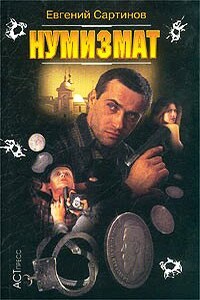Murder at Cape Three Points | страница 73
He forced his thoughts away from his personal affairs. “Your niece, Dr. Smith-Aidoo tells me that you’re a dedicated genealogist.”
Eileen looked pleased. “One of my many interests, yes.”
“To a large extent, Mrs. Copper, that’s why I’m here. Aspects of the murder signature suggested family and ancestry might have played at least part of the motive.”
“Call me Auntie Eileen. Everyone else does, even when I don’t ask them to.” She laughed, more like a dry cackle. “What do you know so far about the Smith-Aidoos?”
“Not much more than a little background on Charles and his wife, you, Brian, and Sapphire. She told me that after your mother was killed in a car crash in 1994, and she overheard Charles telling Auntie Fiona that there must be a curse on the Smith-Aidoo family. He said something like, ‘First my grandparents and now my mother.’ Sapphire wasn’t sure what to make of that.”
“We have shielded Sapphire from some of the more brutal elements of our family’s history.” Eileen paused, her eyes to the floor as she apparently deliberated on how best to frame what she was about to say. “Inspector, we don’t like to talk about family murder, madness, or marital infidelities, and we have plenty of that. The first half of our name, Smith, is from Bartholomew Smith, an English seaman born around 1872. His ship docked at Takoradi for a few weeks when he met and fell in love with a Ghanaian woman and married her. After her death in about 1921, he returned to England with his daughter, Bessie, who got married there in 1925 to a Tiberius Sarbah.”
Dawson’s interest was piqued at that. Sapphire had told him that Jason Sarbah and Charles Smith-Aidoo were first cousins with a common grandmother, Bessie Smith. Now Eileen was going one generation earlier to Bessie’s father, Bartholomew. This was the kind of family history Dawson was looking for.
Eileen rose and picked her way through some folders and documents behind her chair. “I have a photograph of her I can show you.”
She brought out two manila envelopes, took out a picture from one of them, and handed it to him.
“As you can see, she was very beautiful,” she said, dragging her chair closer to his.
He examined the photo. Despite the faded sepia tone of the period, it was clear that the fair-skinned Bessie with her dark swept-up hair and large expressive eyes had been a woman of extraordinary beauty. She was dressed in a white lace blouse and a long, layered, dark skirt with lace trim.

